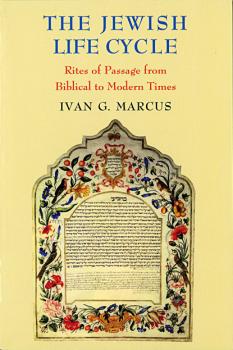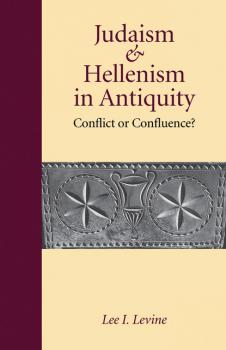Samuel and Althea Stroum Lectures in Jewish Studies
Скачать книги из серии Samuel and Althea Stroum Lectures in Jewish StudiesSchool Photos in Liquid Time
From clandestine images of Jewish children isolated in Nazi ghettos and Japanese American children incarcerated in camps to images of Native children removed to North American boarding schools, classroom photographs of schoolchildren are pervasive even in repressive historical and political contexts. School Photos in Liquid Time offers a closer look at this genre of vernacular photography, tracing how photography advances ideologies of social assimilation as well as those of hierarchy and exclusion. In Marianne Hirsch and Leo Spitzer’s deft analysis, school photographs reveal connections between the histories of persecuted subjects in different national and imperial centers.Exploring what this ubiquitous and mundane but understudied genre tells us about domination as well as resistance, the authors examine school photos as documents of social life and agents of transformation. They place them in dialogue with works by contemporary artists who reframe, remediate, and elucidate them. Ambitious yet accessible, School Photos in Liquid Time presents school photography as a new access point into institutions of power, revealing the capacity of past and present actors to disrupt and reinvent them.
What We Talk about When We Talk about Hebrew (and What It Means to Americans)
Why Hebrew, here and now? What is its value for contemporary Americans? In What We Talk about When We Talk about Hebrew (and What It Means to Americans) scholars, writers, and translators tackle a series of urgent questions that arise from the changing status of Hebrew in the United States. To what extent is that status affected by evolving Jewish identities and shifting attitudes toward Israel and Zionism? Will Hebrew programs survive the current crisis in the humanities on university campuses? How can the vibrancy of Hebrew literature be conveyed to a larger audience?The volume features a diverse group of distinguished contributors, including�Sarah Bunin Benor, Dara Horn, Adriana Jacobs, Alan Mintz, Hannah Pressman, Adam Rovner, Ilan Stavans, Michael Weingrad, Robert Whitehill-Bashan, and Wendy Zierler. With lively personal insights, their essays give fellow Americans a glimpse into the richness of an exceptional language.Celebrating the vitality of modern Hebrew, this book addresses the challenges and joys of being a Hebraist in America in the twenty-first century. Together these essays explore ways to rekindle an interest in Hebrew studies, focusing not just on what Hebrew means�as a global phenomenon and long-lived tradition�but on what it can mean to Americans.
I. L. Peretz and the Making of Modern Jewish Culture
I. L. Peretz (1852�1915), the father of modern Yiddish literature, was a master storyteller and social critic who advocated a radical shift from religious observance to secular Jewish culture. Wisse explores Peretz�s writings in relation to his ideology, which sought to create a strong Jewish identity separate from the trappings of religion.
Writing in Tongues
Writing in Tongues examines the complexities of translating Yiddish literature at a time when the Yiddish language is in decline. After the Holocaust, Soviet repression, and American assimilation, the survival of traditional Yiddish literature depends on translation, yet a few Yiddish classics have been translated repeatedly while many others have been ignored. Anita Norich traces historical and aesthetic shifts through versions of these canonical texts, and she argues that these works and their translations form an enlightening conversation about Jewish history and identity.
The Jewish Life Cycle
In this original and sweeping review of Jewish culture and history, Ivan Marcus examines how and why various rites and customs celebrating stages in the life cycle have evolved through the ages and persisted to this day. For each phase of life–from childhood and adolescence to adulthood and the advanced years�the book traces the origin and development of specific rites associated with the events of birth, circumcision, and schooling; bar and bat mitzvah and confirmation; engagement, betrothal, and marriage; and aging, dying, and remembering. Customs in Jewish tradition, such as the presence of godparents at a circumcision, the use of a four-poled canopy at a wedding, and the placing of small stones on tombstones, are discussed. In each chapter, detailed descriptions walk the reader through such ceremonies as early modern and contemporary circumcision, weddings, and funerals.In a comparative framework, Marcus illustrates how Jewish culture has negotiated with the majority cultures of the ancient Near East, Greco-Roman antiquity, medieval European Christianity, and Mediterranean Islam, as well as with modern secular and religious movements and social trends, to renew itself through ritual innovation.In his extensive research on the Jewish life cycle, Marcus draws from documents on various customs and ritual practices, offering reassessments of original sources and scholarly literature.Marcus�s survey is the first comprehensive study of the rites of the Jewish life cycle since Hayyim Schauss's The Lifetime of the Jew was published in 1950, written for Jewish readers. Marcus�s book addresses a broader audience and is designed to appeal to scholars and interested readers.
Autobiographical Jews
Autobiographical Jews examines the nature of autobiographical writing by Jews from antiquity to the present, and the ways in which such writings can legitimately be used as sources for Jewish history. Drawing on current literary theory, which questions the very nature of autobiographical writing and its relationship to what we normally designate as the truth, and, to a lesser extent, the new cognitive neurosciences, Michael Stanislawski analyzes a number of crucial and complex autobiographical texts written by Jews through the ages.Stanislawski considers The Life by first-century historian Josephus; compares the early modern autobiographies of Asher of Reichshofen (Book of Memories) and Glikl of Hameln (Memoirs); analyzes the radically different autobiographies of two Russian Jewish writers, the Hebrew Enlightenment author Moshe Leib Lilienblum and the famous Russian poet Osip Mandelstam; and looks at two autobiographies written out of utter despair in the midst and in the wake of World War II, Stefan Zweig�s The World of Yesterday and Sarah Kofman�s Rue Ordener, Rue Labat.These writers� attempts to portray their private and public struggles, anxieties, successes, and failures are expressions of a basic drive for selfhood which is both timeless and time-bound, universal and culturally specific. The challenge is to attempt to unravel the conscious from the unconscious distortions in these texts and to regard them as artifacts of individuals� quests to make sense of their lives, first and foremost for themselves and then, if possible, for their readers.
Studying the Jewish Future
Studying the Jewish Future explores the power of Jewish culture and assesses the perceived threats to the coherence and size of Jewish communities in the United States, Europe, and Israel. In an unconventional and provocative argument, Calvin Goldscheider departs from the limiting vision of the demographic projections that have shaped predictions about the health and future of Jewish communities and asserts that «the quality of Jewish life has become the key to the future of Jewish communities.»Through the lens of individual biographies, Goldscheider shows how context shapes Jewish senses of the future and how conceptions of the future are shaped and altered by life experiences. Goldscheider�s distinctive comparative approach includes a critical review of population issues, a consideration of biographies as a basis for understanding Jewish values, and an analysis of biblical texts for studying contemporary values. He combines demographic and sociological analyses in historical and comparative perspectives to dispel the notion that quantitative issues are at the heart of the challenge of Jewish continuity in the future.Numbers are clearly the building blocks of community. But the interpretations of these demographic issues are often confusing and biased by ideological preconceptions. As a basis for studying the core themes of the Jewish future, �hard facts� are less �hard� and less «factual» than interpreters have made them out to be. Population projections are limited by the vision of those who prepare them.Goldscheider concludes that the futures of Jewish communities–in America, Europe, and Israel–are much more secure than has been presented in most scholarly and popular publications, and discussions about the Jewish future should shift to other patterns of distinctiveness.This book will appeal to the general Jewish reader as well as to social scientists and modern Jewish historians. It is appropriate for Jewish studies courses, particularly, but not exclusively, those focusing on Jews in the United States, the American Jewish community, and modern Jewish society, and in courses on ethnicity, multiculturalism, cultural diversity, and ethnic relations.
Judaism and Hellenism in Antiquity
Generations of scholars have debated the influence of Greco-Roman culture on Jewish society and the degree of its impact on Jewish material culture and religious practice in Palestine and the Diaspora of antiquity. Judaism and Hellenism in Antiquity examines this phenomenon from the aftermath of Alexander�s conquest to the Byzantine era, offering a balanced view of the literary, epigraphical, and archeological evidence attesting to the process of Hellenization in Jewish life and its impact on several aspects of Judaism as we know it today.Lee Levine approaches this broad subject in three essays, each focusing on diverse issues in Jewish culture: Jerusalem at the end of the Second Temple period, rabbinic tradition, and the ancient synagogue. With his comprehensive and thorough knowledge of the intricate dynamics of the Jewish and Greco-Roman societies, the author demonstrates the complexities of Hellenization and its role in shaping many aspects of Jewish life�economic, social, political, cultural, and religious. He argues against oversimplification and encourages a more nuanced view, whereby the Jews of antiquity survived and prospered, despite the social and political upheavals of this era, emerging as perpetuators of their own Jewish traditions while open to change from the outside world.
Zakhor
“Mr. Yerushalmi’s previous writings . . . established him as one of the Jewish community’s most important historians. His latest book should establish him as one of its most important critics. Zakhor is historical thinking of a very high order – mature speculation based on massive scholarship.” – New York Times Book Review
A Best-Selling Hebrew Book of the Modern Era
In 1797, in what is now the Czech Republic, Pin as Hurwitz published one of the best-selling Hebrew books of the modern era. Nominally an extended commentary on a sixteenth-century kabbalist text, The Book of the Covenant was in fact a compendium of scientific knowledge and a manual of moral behavior. Its popularity stemmed from its ability to present the scientific advances and moral cosmopolitanism of its day in the context of Jewish legal and mystical tradition. Describing the latest developments in science and philosophy in the sacred language of Hebrew, Hurwitz argued that an intellectual understanding of the cosmos was not at odds with but actually key to achieving spiritual attainment. In A Best-Selling Hebrew Book of the Modern Era, David B. Ruderman offers a literary and intellectual history of Hurwitz�s book and its legacy. Hurwitz not only wrote the book, but was instrumental in selling it as well and his success ultimately led to the publication of more than forty editions in Hebrew, Ladino, and Yiddish. Ruderman provides a multidimensional picture of the book and the intellectual tradition it helped to inaugurate. Complicating accounts that consider modern Jewish thought to be the product of a radical break from a religious, mystical past, Ruderman shows how, instead, a complex continuity shaped Jewish society�s confrontation with modernity.









